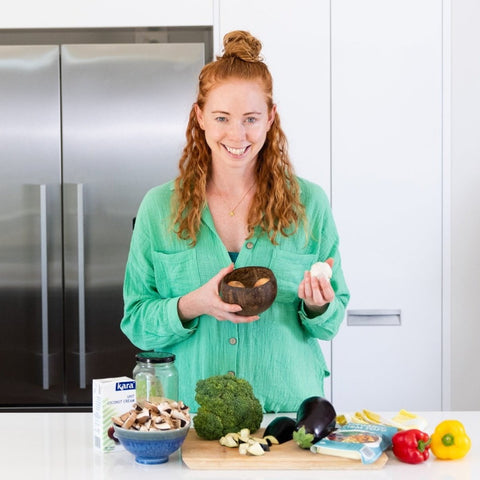Nutrition Guidelines


All our snacks have been reviewed by Sarah Mortimer (Nutritionist, BSc) from Seed Nutrition. This means you can shop at Yummo with confidence, knowing you are getting truly nutritious snacks for yourself and your family.
Snack Selection Criteria
All snacks available on our website have been analysed by Sarah based on the following criteria/guidelines:
- Made from whole-food ingredients that are easily recognised
- Low/no added sugar
- Aiming for an overall sugar content of less than 10g/100g (5g/100g even better). For sweet products (for example containing dried fruit), this will be hard to achieve. In that case, the following additional criteria apply:
* Aim for an overall sugar content of less than 15g/100g
* Only contains natural sugar sources or sweeteners that are naturally derived
* Consider the fibre and protein content to balance out this sugar load
* Consider who is eating the snack, and the timing of that snack (e.g around exercise sugar/carbohydrate is important)
* Consider the serving size as a small serving of this may be ok depending on who is eating the snack and when. - Sodium (salt) content in line with guidelines depending on age group, see details below
- Low in saturated fat, using unsaturated fats instead
Guidelines for specific nutrients and age groups
The following guidelines give an idea of what you are aiming for over a day:
| Age Group | Sodium – Adequate Intake (AI) | Sodium – Upper Level (UL) | Free Sugars – Limit (<10% energy) | Free Sugars – Better (<5% energy) |
|---|---|---|---|---|
| 1–3 yrs | 200–400 mg/day (0.5–1 g salt) | 1,000 mg/day (2.5 g salt) | ≤30 g/day (~7 tsp) | ≤15 g/day (~4 tsp) |
| 4–8 yrs | 300–600 mg/day (0.75–1.5 g salt) | 1,200 mg/day (3 g salt) | ≤40 g/day (~10 tsp) | ≤20 g/day (~5 tsp) |
| 9–13 yrs | 400–800 mg/day (1–2 g salt) | 1,800 mg/day (4.5 g salt) | ≤55 g/day (~13 tsp) | ≤27 g/day (~7 tsp) |
| Adults (14+ yrs) | 460–920 mg/day (1.2–2.3 g salt) | 2,300 mg/day (6 g salt) | ≤55 g/day (~13 tsp) | ≤27 g/day (~7 tsp) |
Sodium
Reading labels for sodium - Adults
- Low-salt foods have less than 120 mg of sodium per 100g
- Moderate-salt foods have 120–600 mg of sodium per 100g
- High-salt foods have more than 600 mg of sodium per 100g
Reading labels for sodium - Children
- Low-salt foods have less than 120 mg of sodium per 100g
- Moderate-salt foods have 120–400 mg of sodium per 100g
- High-salt foods have more than 400 mg of sodium per 100g
1 g salt = ~400 mg sodium
For medium and high salt snacks, you may wish to consider limiting intake for kids. However, it is important to consider in relation to total daily sodium intake. For example, if the rest of their diet is generally low in sodium, then a few higher sodium snacks should be OK. Rest assured, these snacks are still nutritious and provide great benefits, and may still be the best option for your kids given your specific situation. If you would like personalised nutritional advice, please contact Sarah on sarah@seednutrition.co.nz.
Why do we need to pay attention to sodium in children?
- Children’s kidneys are still developing, and they are more sensitive/have less capacity to process excess sodium.
- High sodium diets in early life can influence taste preferences long-term.
- Many processed snack foods (e.g. crackers, cheese sticks, chips) can quickly add up to high sodium intake.
Tips
- I suggest avoiding any food with higher than 400mg of sodium per 100g in children under 3, and be very mindful of how frequent this snack is in older children’s diets.
- Even though there are Upper limits above, this is a maximum and sodium intake can easily sneak up if using packaged foods.
- Read labels!
Adults also need to be mindful of high sodium intake as high intake over time can lead to high blood pressure in some individuals. The Heart Foundation of NZ has shown that the average daily consumption of sodium for kiwis is over 3,000mg/day, but that for optimal heart health we should be aiming for half that - 1,500mg/day.
Sugar
Reading labels for sugar
Sugar is a form of carbohydrate so the label should have a carbohydrate line and then a sugar line, we are interested in the sugar line. This refers to all sugars in the product, they could be naturally occurring like those in fruit, or added - free sugars - like honey, syrups or table sugar. So when we are looking at whether they added any “free” sugars we need to also refer to the ingredients list.
To summarise; if the sugars in the nutrition panel are <5g/100g = low sugar, if >15g/100g it is high sugar. You also need to check if there are naturally occurring sugars like dried fruit or milk products which will contain lactose, these are less of a concern.
If you have a high sugar product you are unsure about then look at the nutrition panel, does it also contain fibre and protein? If so, this bumps up its nutritional value.
1 teaspoon sugar = ~4 g
So for an adult, the <10% limit is ~13 teaspoons/day, and the <5% target is ~6–7 teaspoons/day — including all added sugar plus that in juice or honey. We should be aiming for the 5% target.
A consideration with all of this is that nutrition is very individualised, nutrient requirements vary greatly with things like physical activity, medical conditions, gender and age of the person.
If you would like personalised nutritional advice, please contact Sarah on sarah@seednutrition.co.nz.

